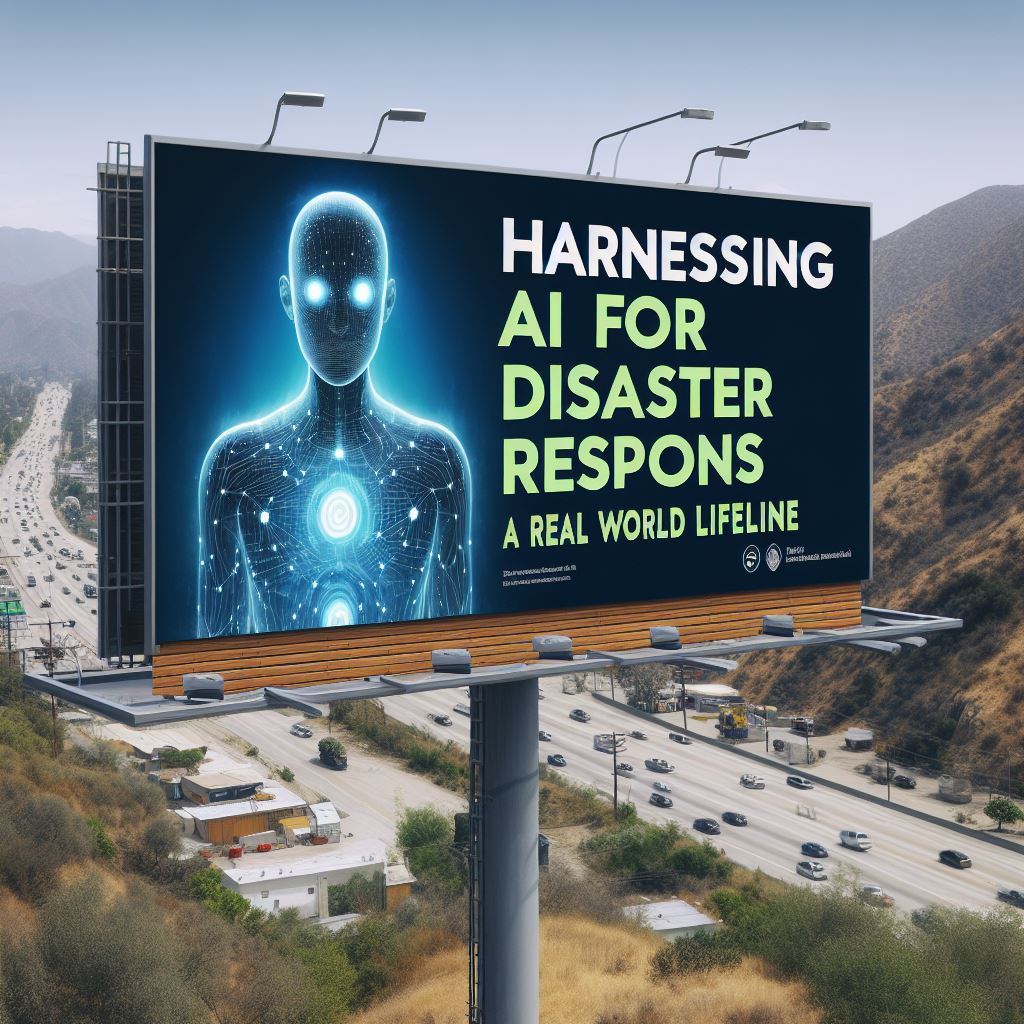Disasters strike with little warning, leaving chaos and devastation in their wake. Yet, amidst the rubble, a new ally emerges: Artificial Intelligence (AI). Harnessing AI for Disaster Response In this article explores the real-life applications of AI in disaster response, showcasing its potential to save lives and aid recovery efforts.
AI: The First Responder – When disaster strikes, time is of the essence. AI technologies, such as drones and image recognition systems, have become first responders. Drones equipped with AI navigate hazardous environments, assessing damage and locating survivors. For example, following the 2015 Nepal earthquake, AI-driven drones provided critical information for rescue operations.
The Eye in the Sky Satellite imagery, combined with AI, offers a bird’s-eye view of disaster zones. AI algorithms analyse these images to identify damaged infrastructure and priorities response efforts. The xView2 project, developed by the Pentagon’s Defence Innovation Unit and Carnegie Mellon University, uses machine learning to categorise the severity of building damage, aiding rescue missions in Turkey and Syria.
Predicting the Unpredictable AI’s predictive capabilities are a game-changer for disaster preparedness. By analysing patterns in seismic activities and meteorological data, AI can forecast natural disasters with increasing accuracy. IBM’s PAIRS Geo scope is one such technology that predicts floods by examining rainfall and temperature data.
Remote Sensing and Damage Assessment Following a disaster, accurate assessment of the extent of damage is crucial for prioritising rescue and relief efforts. AI-powered remote sensing technologies, such as satellite imagery and drones equipped with sensors, play a pivotal role in this regard. These platforms can quickly survey affected areas, identify infrastructure damage, and assess the needs of impacted communities. Moreover, AI algorithms can analyse imagery data to generate detailed damage maps, providing responders with valuable insights to guide their interventions.
Predictive Analytics for Early Warning Systems – One of the most significant contributions of AI in disaster response is its ability to enhance early warning systems through predictive analytics. By analyzing vast amounts of data, including weather patterns, seismic activity, and historical disaster records, AI algorithms can identify potential threats and issue timely warnings to at-risk communities. For example, IBM’s Deep Thunder utilizes AI to forecast weather conditions with unprecedented accuracy, enabling authorities to take proactive measures to mitigate the impact of impending disasters.
Natural Language Processing for Crisis Communication .Clear and timely communication is essential during a disaster to disseminate critical information and coordinate response efforts. Natural Language Processing (NLP) techniques enable AI systems to analyse and generate human-like text, facilitating real-time communication with affected populations. Chat bots and virtual assistants equipped with NLP capabilities can answer queries, provide instructions, and offer support to individuals in distress, augmenting the capacity of emergency response teams to manage communication channels efficiently.
Challenges and Ethical Considerations. Despite its immense potential, the integration of AI in disaster response presents several challenges and ethical considerations. Concerns related to data privacy, algorithm bias, and accountability must be addressed to ensure that AI-driven interventions are transparent, equitable, and respectful of human rights. Moreover, the reliance on AI technologies should not overshadow the importance of human expertise and empathy in delivering effective emergency assistance.
Harnessing AI for Disaster Response by leveraging advanced technologies to enhance preparedness, response, and recovery efforts. From predictive analytics and remote sensing to optimized resource allocation and crisis communication, AI-driven solutions are transforming the way we mitigate the impact of natural disasters and save lives. However, realizing the full potential of AI in disaster response requires collaboration between governments, NGOs, technologists, and communities to overcome challenges and ensure that AI serves as a force for good in times of crisis. By harnessing the power of AI responsibly and ethically, we can build more resilient and adaptive systems that protect vulnerable populations and safeguard our planet against the growing threats posed by natural disasters.
Artificial Intelligence is no longer a futuristic concept; it is a present-day hero in disaster response. Its ability to analyse, predict, and act swiftly makes it an indispensable tool in our collective effort to combat the effects of disasters. As we harness the power of AI, we pave the way for a future where the impact of disasters can be mitigated, and recovery efforts are more efficient and humane.


certainly like your website but you need to take a look at the spelling on quite a few of your posts Many of them are rife with spelling problems and I find it very troublesome to inform the reality nevertheless I will definitely come back again